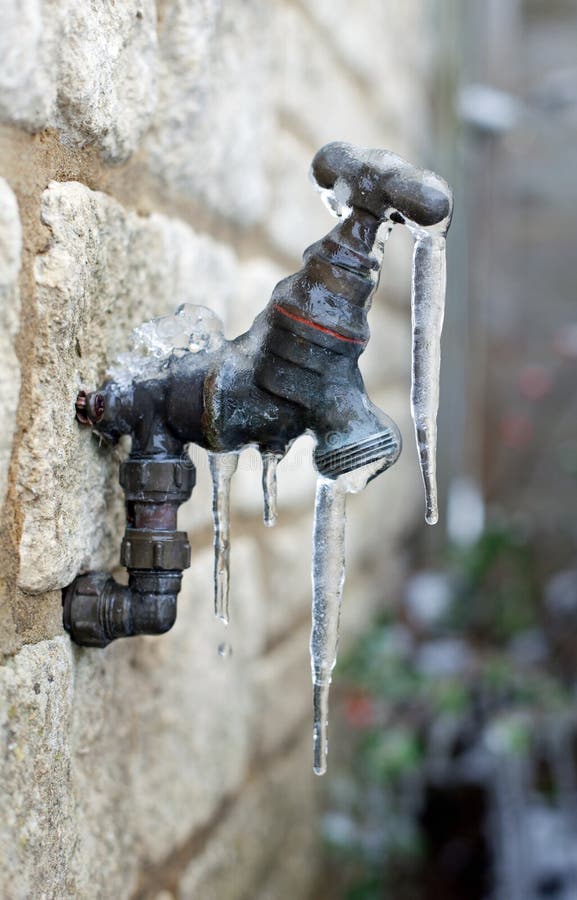Avoid Frozen Pipes in Winter: Expert Advice
Avoid Frozen Pipes in Winter: Expert Advice
Blog Article
This post following next in relation to How To Avoid Freezing Pipes is pretty much remarkable. Give it a try and make your own ideas.

Cold weather can wreak havoc on your pipes, particularly by freezing pipes. Below's how to avoid it from happening and what to do if it does.
Intro
As temperatures decline, the danger of frozen pipes increases, possibly resulting in costly repair work and water damages. Recognizing how to avoid frozen pipes is essential for house owners in cold climates.
Understanding Icy Pipelines
What creates pipes to ice up?
Pipes freeze when subjected to temperatures listed below 32 ° F (0 ° C) for extended durations. As water inside the pipelines freezes, it increases, putting pressure on the pipe wall surfaces and potentially triggering them to break.
Threats and damages
Frozen pipelines can lead to water system disturbances, residential property damages, and pricey repairs. Burst pipes can flood homes and cause comprehensive architectural damages.
Indications of Frozen Piping
Recognizing icy pipelines early can avoid them from rupturing.
Exactly how to determine frozen pipes
Search for decreased water flow from faucets, unusual smells or sounds from pipes, and noticeable frost on exposed pipelines.
Avoidance Tips
Insulating prone pipelines
Cover pipes in insulation sleeves or use warm tape to secure them from freezing temperature levels. Focus on pipes in unheated or exterior areas of the home.
Heating techniques
Maintain interior rooms properly heated, particularly locations with pipes. Open up cabinet doors to allow cozy air to circulate around pipes under sinks.
Securing Outdoor Pipes
Garden tubes and exterior faucets
Disconnect and drain pipes garden pipes before winter months. Install frost-proof spigots or cover outside faucets with protected caps.
What to Do If Your Pipelines Freeze
Immediate activities to take
If you presume icy pipelines, keep faucets available to eliminate stress as the ice melts. Utilize a hairdryer or towels soaked in warm water to thaw pipes slowly.
Long-Term Solutions
Structural adjustments
Think about rerouting pipes away from outside walls or unheated areas. Include additional insulation to attics, cellars, and crawl spaces.
Updating insulation
Invest in high-quality insulation for pipelines, attics, and wall surfaces. Appropriate insulation helps preserve consistent temperature levels and decreases the threat of frozen pipelines.
Conclusion
Avoiding frozen pipes requires positive steps and quick reactions. By recognizing the reasons, indications, and safety nets, homeowners can protect their pipes throughout cold weather.
6 Proven Ways to Prevent Frozen Pipes and Protect Your Home
Disconnect and Drain Garden Hoses
Before winter arrives, start by disconnecting your garden hoses and draining any remaining water. Close the shut-off valves that supply outdoor hose bibs and leave the outdoor faucet open to allow any residual water to drain. For extra protection, consider using faucet covers throughout the colder months. It’s also important to drain water from any sprinkler supply lines following the manufacturer’s directions.
Insulate Exposed Pipes
Insulating your pipes is an effective way to prevent freezing. Pipe insulation is readily available at home improvement stores and is relatively inexpensive. Pay close attention to pipes in unheated areas such as the attic, basement, crawl spaces, or garage. Apply foam insulation generously to create a buffer against the cold. You can also wrap your pipes in heat tape or thermostat-controlled heat cables for added warmth.
Seal Air Leaks
Inspect your home for any cracks or openings that could let in cold air. Seal any holes around the piping in interior or exterior walls, as well as the sill plates where your home rests on its foundation. Additionally, make sure to keep your garage door closed unless you’re entering or exiting. Leaving it open creates a significant air leak that can lead to frozen pipes.
Allow Warm Air Circulation
During cold snaps, it’s essential to allow warm air to circulate evenly throughout your home. Leave interior doors ajar to promote better airflow. Open kitchen and bathroom cabinets to help distribute heat consistently around the rooms. If you have small children or pets, be sure to remove any household chemicals or potentially harmful cleaners from open cabinets for safety.
Let Faucets Drip
A small trickle of water can make a big difference in preventing ice formation inside your pipes. When temperatures drop significantly, start a drip of water from all faucets served by exposed pipes. This continuous flow helps prevent the water from freezing. Additionally, running a few faucets slightly can relieve pressure inside the pipes, reducing the chances of a rupture if the water inside does freeze.
https://choateshvac.com/6-proven-ways-to-prevent-frozen-pipes-and-protect-your-home/

As a fervent reader about Prevent Frozen Pipes , I imagined sharing that section was smart. Make sure you take the time to share this write-up if you enjoyed it. Thanks a bunch for being here. Revisit us soon.
Click Here Report this page